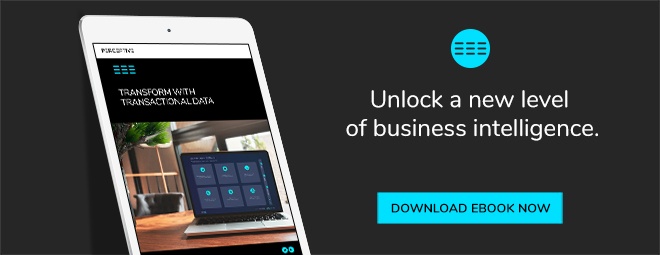Know your customer. It has become a mantra for marketers around the world. To be competitive in today’s marketplace, businesses need to stay relevant and understand the needs of their customers. And what better way to plump the depths of customer behaviour than to ask the customers themselves? Whether it’s gathering customers into focus groups or surveying them individually, businesses are constantly asking customers what they do and why.
“What items did you purchase? What time did you visit? What did you spend? Why did you think that? Why does it make you feel that way?”
And customers answer. Dutifully, businesses record it, analyse it; cross-reference the results by customer segment, region, product purchased and every other which way to understand what makes them tick. That is as close as you can get to truly knowing your customer, right?
It’s not.
“Asking customers to recall what they’ve done is tricky as people are poor at recalling their actual behaviour,” says Oliver Allen, General Manager at Perceptive. “One of our constant challenges is connecting what people are telling us to what they truly do.”

The limitations of claimed data
Claimed data—gathered via surveys or focus groups—provides a starting point for building a view of your customer, but with self-reported behaviour as your only data source, that view is two-dimensional. To turn two-dimensional into three, you need more data.
Enter actual behaviour. Data from real world consumer activity and captured in the moment rather than recalled at a later time. From in-store camera footage and foot traffic counters to location and transactional data, all of it shows consumer behaviour in action.
“Having actual behavioural data allows us to understand the relationship between what people say, think and feel, and how they actually behave,” says Oliver.
With it, you can see how your customers truly interact with your brand, from how much they spend to where they shop, how often they shop, where else they shop.
Why we aren’t as truthful as we claim we are
According to author and Harvard Professor Gerald Zaltman, a “customer’s buying decision is influenced by the complex interactions between mind, brain, body, and society in general.”1
How we think, reason and recall, often comes down to our biases and experiences, and there are a variety of aspects at play that can lead to us bending the truth, often without realising.
Memory is not perfect
In fact human memory is notoriously unreliable. It embellishes, change facts, and even creates false memories—all without us even realising.2 Moreover, when we share our memories with others, we’ll tailor our retelling depending on who is listening (known as audience-tuning). But when we do this, we often unknowingly change the memory itself.
Biases
Social desirability
Social desirability bias is the urge to give the socially acceptable “right” answer. For example, one study found respondents reported drinking significantly less than they actually did. In reality, researchers observed 70 per cent of males drinking more alcohol at risky or high‐risk levels and 49 percent more females drinking at risky or high risk levels.3
The herd effect
Where participants give the same answer as the rest of a group, even if they don’t believe in it. A good example of this are voting polls.
Wishful thinking
We often grossly overestimate our abilities. From how well we drive to how much we can eat in one sitting. Wishful thinking sees people view their behaviour optimistically and report what they’d like to be true rather than what actually is. For example, one study found that 80 per cent of drivers rated themselves in the top 30 per cent of drivers.4
Experiences
Our experiences influence how we respond when asked to report on our behaviour. For example, if your social media has recently been hacked, you’re likely going to report that you’re now more security conscious. (But whether you actually are could be up for debate.)
Why use claimed behaviour at all?
While claimed behaviour has its flaws, it offers something that actual behaviour can’t.
Context.
It’s the difference between knowing your customer went to a fast-food restaurant last Friday at 12:15pm and spent $6 (actual data), versus also knowing your customer works as a building contractor, was in a hurry between jobs so they used the drive-thru and chose a combo deal because they believed it offered the best value for money.
Claimed data is best used when attempting to understand softer metrics: how do you feel about this brand? This ad? This campaign? This product? But ask someone to remember what exactly they bought last week… that’s a stretch. Try it. It’s more difficult than you might think.
But this is where actual data excels. Actual, observed behaviour gives precise information around what customers do, such as what they bought and where they went. While claimed data helps us better understand why. Which is why the two data sources used together is a powerful combination.
“Using only claimed behaviour or only actual behaviour means you miss crucial pieces of information into how and why you customers behave the way they do,” says Oliver. “Having only one data source leads to a one-dimensional view of your customer.”
Think of it like a puzzle; each piece is a data source. With only one piece, you’ll never have the complete picture. The most successful brands are those who have multiple pieces.
Read more: How to use all your data to extract true business intelligence
Understanding the gap between claimed and actual data
Comparing claimed data from panels and surveys to true behavioural data, such as transactional data, can help you see the difference between what consumers think they did (or claim they will do), and what they actually did (or will do). Which is often telling in itself.
For example, say you’re launching a new product that 70 per cent of the market claim they’ll buy. But if you don’t know how many of those customers are new acquisitions or simply switching their spend within your brand, you could be setting yourself up for failure.
Using transactional data to compare claimed to actual behaviour, you could see which of those customers already buy from you, and how many of those consumers shop within your market, but not from your business. With the right transactional data, you might even analyse how those non-customers shop within your market to determine how loyal they are. Do they always shop at the same store? How often do they visit per month? If loyalty is low, your product could be viable. If loyalty is high, it could be a wasted effort.
“Claimed data creates a bunch of unknowns. People can say one thing, but we don’t know what will happen,” says Oliver. “Having actual data allows us to remove some of those unknowns and help properly size an opportunity.”
“Understanding the gap between claimed and actual behaviour is essential for making smart business decisions,” says Oliver. “When claimed and actual data are used together like this, you uncover deeper truths to guide your strategy.”
Monitoring the gap is a useful performance KPI
Tracking the gap between your claimed data and actual data is a powerful way to assess business performance—from the effectiveness of your marketing and sales to customer service and experience.
Ideally, an increase in your claimed metric—be it brand consideration or Net Promoter Score—would also see an increase in actual behaviour, such as increased store visits, or purchases. However, what happens when they don’t match up? Or if one rises but the other falls?
“If correlating a claimed metric back to actual behaviour doesn’t result in your desired outcome then there’s a disconnect,” says Oliver. And if that disconnect is consistent—where increases in one does not lead to increases in the other—it could mean you’re not you measuring the right KPIs.
Stronger understanding lies in combined data
Just as people possess a mix of hard and soft skills, so should your business intelligence. Claimed and actual data both have their place, and neither should be sacrificed for the sake of the other. However, it is crucial to understand the strengths and weaknesses of each data type. When used in combination they provide you with a greater, more detailed understanding of your customers and a powerful set of measures to drive your business into the data age.
Want to start using actual behavioural data? Transactional data is a great place to begin. Learn how it can enhance your business and marketing decisions in our free transactional data ebook!
1. Zaltman, G. "How Customers Think: Essential Insights into the Mind of the Market", Audio-Tech Business Book Summaries. Volume 12, No. 2. 2003.
2. Nash, R. Are memories reliable? Expert explains how they change more than we realise, The Conversation, 17 December 2018.
3. Rundle-Thiele, S. Bridging the gap between claimed and actual behaviour: The role of observational research, Emerald Insight, 12 June 2009.
4. Svenson, O. Are we less risky and more skillful than our fellow drivers? Acta Psychologica 47, 143–148, 1981.
